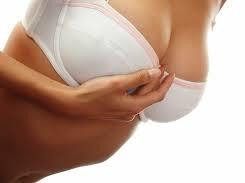Most women have specific concerns regarding breast implants. The appearance and feel of Breast Implants and Augmentation and whether breastfeeding is possible with implants in place. A plastic surgeon can help answer these questions and explain how the type, size, and texture of implants. You choose, along with the type of incision and implant placement used are all factors that contribute to the overall results.
Common areas of concerns regarding breast augmentation
Look and Feel
While finding the right plastic surgeon is the first step toward achieving your desired appearance, the type of breast implants you choose can also affect the outcome. Both saline and silicone implants are soft, but silicone implants typically provide the most natural-looking and -feeling breasts.
When held in the hand, saline implants tend to collapse at the edges, making them more palpable and less natural feeling when placed in the breast pocket. The newer cohesive gel silicone implants don’t have this flaw, and also provide more natural-looking contours, as the implants can more effectively assume the shape of breast tissue.
Additionally, the implant surface coating (smooth vs. textured) can have an effect on the look and feel of augmented breasts. Textured implants are typically used to prevent rotation within the breast pocket. The thicker, textured shell can make implants more noticeable.
Round implants come in both textured and smooth surfaces, but a smooth coating allows the implants to rotate freely within the breast pocket, a feature that many surgeons believe a more natural feel to the breasts.
Though teardrop shaped implants mimic the actual contours of a breast, they are only rarely used for breast reconstruction procedures, not augmentations.
Lifespan
Another concern involving breast implants is how long they will last. Reports of implant rupture, deflation, and leakage were prominent in the 1970s and 1980s, as saline and the original silicone implants were more susceptible to these issues.
After many years of research, the FDA conditionally approved new cohesive silicone gel implants for use in 2006. These implants are filled with an improved silicone compound with interlocking molecules, which makes for a thicker, less viscous  consistency than that of the filler used in older silicone implants.
consistency than that of the filler used in older silicone implants.
As a result, these implants are more form-stable than saline or the older silicone implants, which means they’ll hold their shape, and the gel filler won’t leak into the body if a rupture occurs.
Furthermore, the design and manufacturing of the outer shell have improved over the years, resulting in far fewer failures and a longer lifespan than saline implants. Nevertheless, implants may need to be replaced every ten years or so to maintain the original results.

